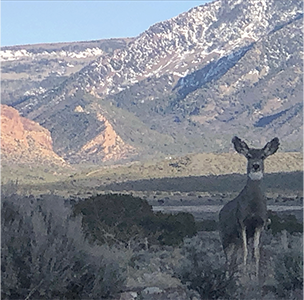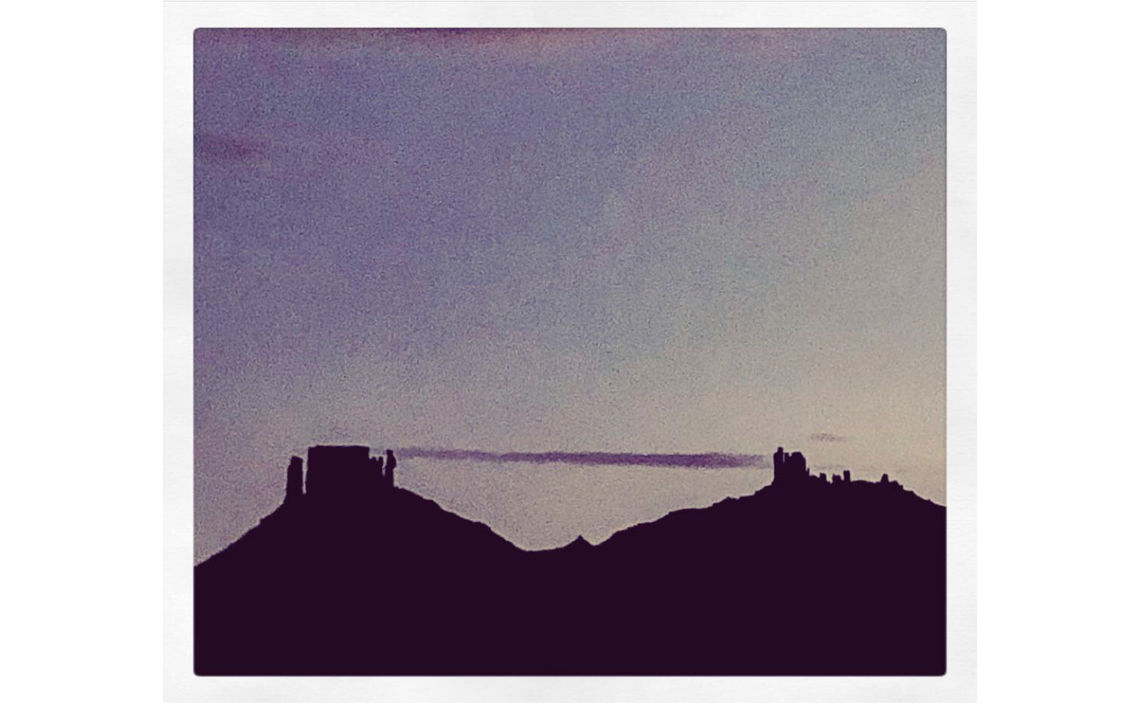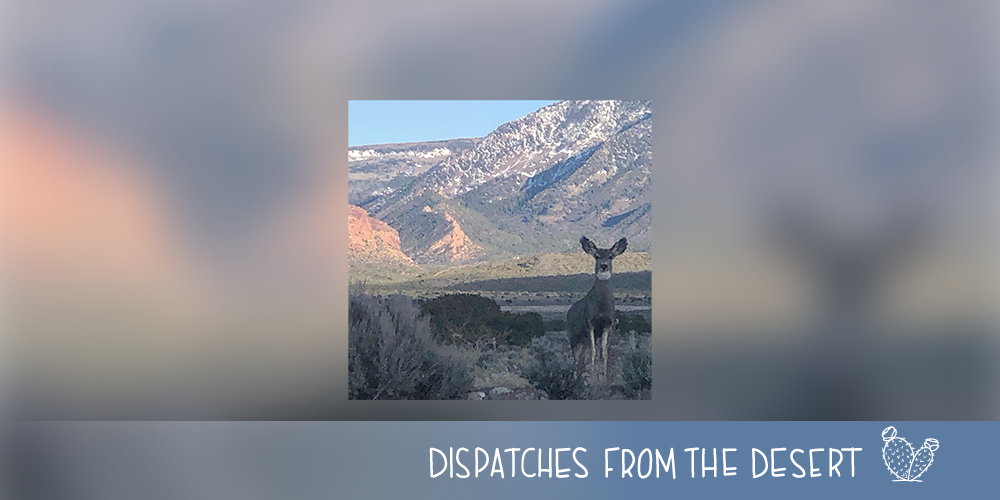3 April 2020
Castle Valley, Utah
e all know this quote by Charles Dickens from A Tale of Two Cities, “It was the best of times, it was the worst of times, it was the age of wisdom, it was the age of foolishness…It was the season of Light, it was the season of Darkness, it was the spring of hope, it was the winter of despair.”
But I was surprised to see it as the lead epigram for a landmark book about to be published called, Planetary Health: Protecting Nature to Protect Ourselves, by public health scholars and physicians Dr. Samuel Myers and Dr. Howard Frumkin.
The groundwork for their thinking on planetary health is set in the first paragraph, “By many metrics, there has never been a better time to be a human being. Indeed, the past 70 years have seen almost unimaginable improvements in global human wellbeing…In 65 years the percentage of the world’s people living in extreme poverty dropped from 63% to 10% despite a near tripling of the global population. But there may never have been a worse time for the rest of the biosphere, at least since human beings began walking the planet.”
The authors tell the story of a male Cuvier’s beaked whale that washed up dead on a beach in the Philippines on March 17, 2019. The cause of death: 88 pounds of plastic garbage lodged inside the creature’s stomach and intestines. They tell us our species is responsible for 8 million metric tons of plastic waste floating in the world’s oceans each year. With each subsequent page I read, the question must be asked: what is our relationship with nature?
Last night, Brooke and I watched the tide of mule deer move down the valley. It’s like living on the edge of the ocean with tidal sweeps of water, high tide — low tide; only here in the desert, it is the dawn and dusk movement of animals in a sea of sage.
We have come to recognize certain individuals. There is one doe who is brave. She will stand on the hillside close to our kitchen and while we are cooking, she will stare at us. It’s disconcerting. Sometimes, we will go outside on the porch and say hello to her. Her gaze meets ours and we all stand in silence. She will flick her ears, but her large black eyes remain steady. Other does will gather behind her like a posse of enforcers.
the hillside close to our kitchen and while we are cooking, she will stare at us. It’s disconcerting. Sometimes, we will go outside on the porch and say hello to her. Her gaze meets ours and we all stand in silence. She will flick her ears, but her large black eyes remain steady. Other does will gather behind her like a posse of enforcers.
I wonder what the brave doe is thinking when she watches us. I wonder what signals we convey that may appear threatening or non-threatening. And I would be less than honest if I did not admit that I wished I could touch her, walk with her and experience the living world through her sensibilities.
Instead, I talk to her. In a quiet voice, I say, “Hello, Beauty – How are you?” Mine is always the same greeting. I believe she knows my voice. After eye contact, I tell her I am sorry for making their lives more difficult. Our town has infringed on their habitat. It will only get worse for them. In these days of the coronavirus when I hear of food shortages, it has crossed my mind that we have a food source here at home.
I am cloaked in paradox – the best of times and the worst of times – we love these deer and if necessary, we could kill them for food. Our relationship to nature is complicated and often, self-serving. Our needs overtake theirs. It is the nature of our species.
What is the definition of planetary health? Myers and Frumkin tell us,
“…at the heart of the field of planetary health is recognition that the well being of humanity and the degradation of the rest of the biosphere cannot remain disconnected much longer.”
The global pandemic we are experiencing speaks to the press of our species on biophysical changes. “Rapidly changing environmental changes also alter our exposures to infectious diseases and natural hazards such as heat waves, droughts, floods, fires, and tropical storms.” The loss of biodiversity is real. Climate disruption is real. We have tipped the Earth’s scales by the weight of our appetites. The source of COVID-19 is no exception, thought to be tied to the illegal animal trade. New studies support data that pangolins are the missing link for SARS-CoV-2 transmission between bats and humans.
We have bats here in the desert. They take care of the mosquitoes that come in the rainy season. If you rub two pennies together, they will fly closer to you with their skills of echolocation. The face of a bat hunting at twilight is haunting. What scares us, sometimes liberates us. It wasn’t until I found one dead that I saw how beautiful they are – a hybrid creature, half bird, half mammal – the stuff of myths.

We are living a fearful moment, one that is killing us. If we can see this pandemic for what it is, evidence of a terrible imbalance and twisted relationship with the living world, perhaps it will free us of our ignorance and arrogance. The result of facing our folly with a fierce intention of healing what we have harmed, could become a renewed commitment to greater planetary health and a call for Dickens’s wisdom over foolishness, moving us from darkness to light.
Terry Tempest Williams
Terry Tempest Williams is a writer, naturalist, activist, educator—and patient. In this fourth “Dispatch from the Desert,” Terry shares the work of theologians Stephanie Paulsell and Howard Thurman and describes another kind of contagion: human dignity.
For people who give a lot, it’s hard to receive. Harvard Graduate School of Education student Niharika Sanyal shares practices of acceptance and gratitude to support renewal within the health care community.
Family Medicine physician and co-director of the Resiliency Center Amy Locke outlines five ways U of U Health’s strategic commitment to well-being is paying off during COVID-19.
